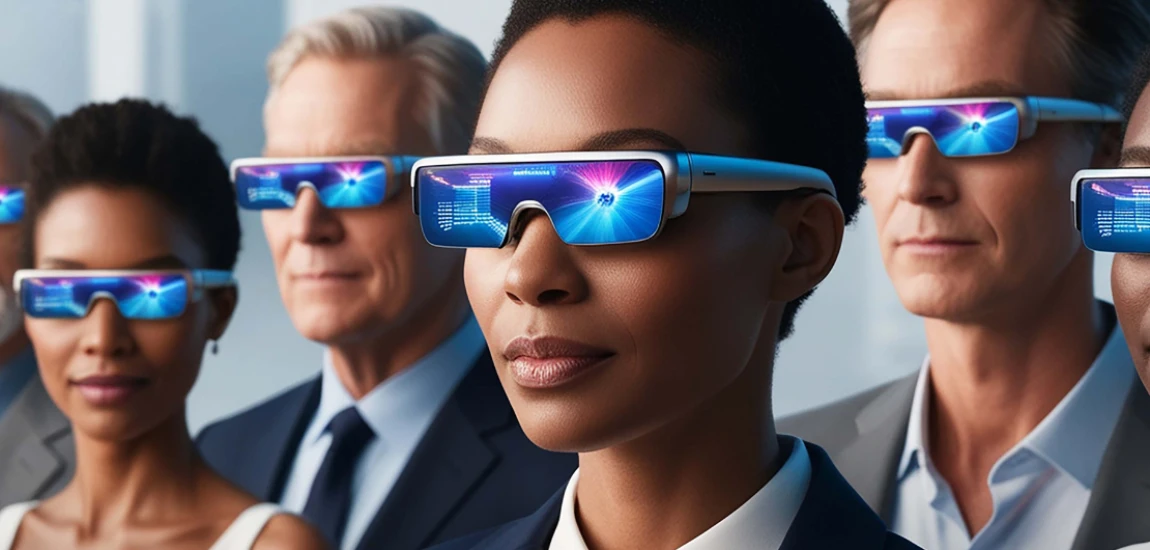The Metaverse Mirage: Hype vs. Reality in the Future of Interactive Worlds

The metaverse was pitched as the next great frontier—a seamless blend of virtual reality, augmented reality, and interconnected digital spaces. Tech giants promised a digital world where we would work, play, and socialize in ways that transcended physical boundaries. The narrative positioned it as the successor to the internet itself, an immersive universe of infinite possibility. Yet years after the initial buzz, many are asking: was the metaverse just a mirage?
The Origins of the Metaverse Concept
The term “metaverse” comes from Neal Stephenson’s 1992 novel Snow Crash, which depicted a digital world parallel to our own. Since then, it has inspired countless tech visions, from Second Life to Meta’s rebranding of Facebook.
Why the Hype Exploded
The convergence of VR, blockchain, gaming, and digital ownership fueled the explosion of metaverse discourse around 2020–2022. Lockdowns during the pandemic accelerated this hype, as people craved social interaction beyond Zoom.
The Current State of Expectations
While billions have been invested, adoption lags. Clunky hardware, underdeveloped platforms, and lack of widespread interest have made many wonder if the metaverse dream is outpacing reality.
The Hype Machine: Selling a Digital Utopia

The narrative around the metaverse has often been more marketing than substance. Companies painted a futuristic vision where people live, work, and shop entirely online.
Big Tech and Branding
Meta’s rebranding symbolized the full embrace of this vision, betting its future on the metaverse. Other players like Microsoft, Roblox, and Epic Games framed themselves as pioneers of this new frontier.
The Role of NFTs and Web3
NFTs were touted as the cornerstone of metaverse economies, with digital land and avatars selling for millions. Promises of ownership and exclusivity drove speculative markets, inflating expectations further.
Media Amplification
Mainstream media fueled the hype with headlines about billion-dollar investments and celebrity endorsements. But as quickly as the hype rose, skepticism followed when promised results failed to materialize.
Virtual Worlds: What Exists Today

To understand reality, it’s worth looking at the virtual worlds already available. While not as futuristic as the hype suggests, many platforms have laid groundwork for what the metaverse might become.
Gaming as a Precursor
Games like Fortnite, Minecraft, and Roblox already function as proto-metaverses, blending entertainment, social interaction, and commerce.
Virtual Reality Platforms
VRChat and Horizon Worlds offer immersive social experiences, though adoption remains limited due to hardware barriers and steep learning curves.
Hybrid Digital Spaces
Events like Travis Scott’s Fortnite concert and virtual fashion shows in Decentraland highlight how these platforms are experimenting with large-scale, shared digital experiences.
The Reality Check: Why the Metaverse Struggles

Despite billions in investment, the metaverse faces fundamental challenges that prevent it from living up to the hype.
Accessibility Barriers
VR headsets remain expensive, bulky, and inaccessible to much of the global population. Internet infrastructure also varies significantly, limiting widespread participation.
Content and Purpose
Many platforms lack compelling content or clear reasons for users to log in daily. Without strong value propositions, most users lose interest quickly.
The Overlap with Existing Internet
Much of what the metaverse promises—social connection, commerce, entertainment—already exists in simpler, more accessible forms online.
Work in the Metaverse: Productivity or Gimmick?

One of the strongest pitches for the metaverse was its role in revolutionizing work. But has this vision materialized?
Virtual Offices and Meetings
Companies experimented with VR meeting rooms, hoping to make remote work more engaging. However, technical glitches and fatigue often made them less efficient than video calls.
Training and Simulation
Where the metaverse shows real promise is in training for medicine, engineering, and the military. These immersive environments allow safe, controlled practice for high-risk professions.
The Future of Work or a Passing Trend?
For most businesses, the metaverse remains impractical. Until the technology matures, its role in everyday work will likely remain limited.
The Social Experience: Avatars, Identity, and Community

At its core, the metaverse is supposed to be about connection. Yet, building authentic community in digital worlds comes with unique challenges.
Avatars as Digital Identity
Avatars allow self-expression, letting users experiment with identity. However, questions of authenticity and anonymity complicate trust and communication.
Building Virtual Communities
Some communities thrive in metaverse spaces, particularly fandoms and niche interest groups. Still, these are exceptions rather than the rule.
Loneliness in a Connected World
Ironically, while designed for connection, many users report that metaverse platforms feel empty. Without critical mass, the “social” promise remains unfulfilled.
The Economics of the Metaverse: Boom or Bust?

Economies were central to the hype, but financial realities have not kept pace.
Digital Real Estate Speculation
Plots of virtual land sold for millions during the NFT boom, but values plummeted as demand dwindled.
In-World Economies
Some games successfully sustain vibrant economies with in-game currencies and marketplaces. But replicating these on a larger metaverse scale remains elusive.
The Role of Advertising
Brands from Nike to Gucci experimented with metaverse marketing. While innovative, these campaigns often reach more headlines than actual consumers.
Ethical and Privacy Concerns in the Metaverse

The metaverse raises pressing ethical questions that can’t be ignored.
Data Privacy and Surveillance
With immersive tracking, companies collect vast amounts of biometric data. This raises serious concerns about surveillance and misuse.
Inclusivity and Accessibility
Most platforms still cater to affluent users with advanced hardware, leaving marginalized groups excluded from participation.
Toxicity and Moderation
Just as with social media, harassment and toxic behavior are rampant in early metaverse spaces, with limited tools to regulate or protect users.
Beyond the Mirage: Realistic Potentials of the Metaverse

While the hype oversold expectations, there are genuine possibilities worth exploring.
Education and Learning
Virtual classrooms and simulations can provide engaging learning experiences for students worldwide.
Healthcare Applications
VR therapy, rehabilitation, and mental health treatments are already showing promising results in controlled settings.
Hybrid Physical-Digital Futures
Instead of replacing the internet or real life, the metaverse may complement them, offering niche but valuable experiences.




